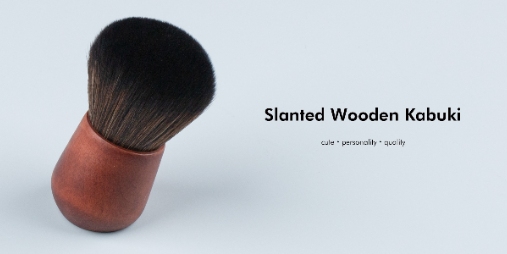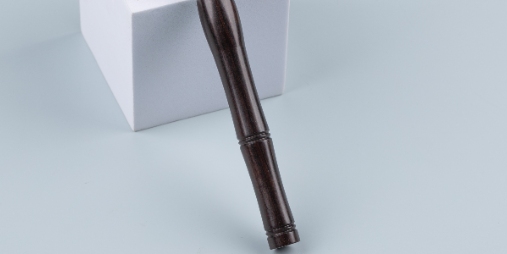+86 198 0337 5938
+86 198 0337 5938
Nov. 21, 2025
In short:
Vegan brushes are made with synthetic fibers at their core, combined with animal-free glues, coatings, and sustainably sourced handles.
With the growing popularity of vegan and cruelty-free concepts in the beauty industry, more and more consumers are adding vegan brushes to their shopping carts. However, many still have questions: "What are vegan brushes actually made of? Are they just plastic brushes?"
Green Brush will take you through a vegan brush breakdown, from the bristles to the handle, to see its ingredient list.

First, let's clarify a key point:
Vegan = Free of animal-derived ingredients. Common traditional animal hairs include:
Goat hair, weasel hair, squirrel hair, mink hair, etc.
Animal glue, fish glue, etc., may be present in brush head adhesives.
The bristles are not derived from any animal.
Animal-derived ingredients (such as gelatin, beeswax, etc.) are also not used in adhesives, coatings, and other auxiliary materials.
This is related to, but not entirely the same as, "cruelty-free" (no animal testing): a product can be cruelty-free, but not necessarily vegan; while truly vegan brushes usually emphasize both.
Currently, most vegan brushes on the market use synthetic fibers for their bristles, commonly including:
Stable structure, durable, and not easily broken.
Suitable for eyeliner brushes, lip brushes, and other brushes requiring a "firmer" bristle.
PBT Fiber (Polybutylene Terephthalate)
Softer than traditional nylon, often used in face powder brushes and blush brushes.
Through drawing and polishing processes, it can be made to resemble the "scale-like" texture and powder-grabbing ability of animal hair.
A specially treated high-end synthetic fiber with a finer surface.
Used by many brands to create high-end vegan brushes that mimic animal hair.
To enhance the user experience, some brands also apply microporous or oleophilic/hydrophilic treatments to the fiber surface, allowing the bristles to:
better pick up powder and cream products
improve makeup evenness and softness
reduce irritation, making them suitable for sensitive skin
Simply put: today's high-quality vegan bristles are not just "plastic bristles," but rather backed by a whole set of "biomimetic technology."
Besides the bristles, a brush also has a handle and a ferrule. Under the vegan and sustainable philosophy, these components are also quietly being upgraded.

Sustainable Wood
For example, FSC-certified wood (from sustainably managed forests)
Surface coatings often use low-VOC or water-based paints to reduce environmental burden.
Bamboo
Rapid growth, highly renewable
Visually more "eco-friendly," favored by green brands.
Recycled or Recyclable Plastics
Some brands use recycled plastics (PCR) to manufacture brush handles.
The goal is to reduce the consumption of virgin petrochemical resources.

Aluminum alloy, stainless steel, copper, etc.
Structurally stable and recyclable
Surfaces are enhanced with electroplating or spraying for aesthetics and corrosion resistance.
These parts themselves do not contain animal ingredients, so whether they are "vegan" mainly depends on whether the coatings, adhesives, and other auxiliary materials use animal-derived ingredients.
Many consumers easily overlook: The brush head and handle rely on glue, adhesives, and coatings.
In traditional manufacturing processes, some adhesives may use animal bone glue or fish glue.
Vegan brushes, however, use synthetic resin glues or other animal-free formulas.
Furthermore, the brush handle coating may use natural ingredients like beeswax, while vegan brands choose plant waxes (such as carnauba wax) or pure synthetic resin systems.
Therefore, a truly good vegan brush is one that is completely free of animal products "from the inside out."

While animal hair was historically valued for natural cuticles and powder pickup, new synthetic technologies have surpassed these qualities in several ways:
Synthetic fibers are non-porous, meaning they don’t trap:
Oils
Bacteria
Pigments
Skincare residue
This makes vegan brushes easier to clean and more suitable for sensitive skin.
Animal hair varies depending on animal age, season, and region.
Synthetic fibers offer:
Stable supply
Uniform quality
Predictable performance
Natural hair absorbs creams, serums, and oils, causing clumping and reduced lifespan.
Vegan fibers remain stable with:
Liquid foundation
Cream blush
Gel products
Skincare-infused formulas
With growing global awareness of animal welfare and environmental protection, vegan brushes align with:
Cruelty-free beauty standards
Eco-conscious brand positioning
Consumer demand for sustainable alternatives
Faced with a dazzling array of brushes, ordinary consumers can judge from the following aspects:
1.Check the packaging and official website instructions
2.Does it clearly state "Vegan," "100% synthetic bristles," "No animal-derived ingredients," etc.?
3.Does it also state "Cruelty-free"?
4.Look for certification marks:such as vegan certification in some regions, cruelty-free certification marks from animal protection organizations, etc.
5.Pay attention to the brand's public information
6.Does the brand disclose the bristle material (e.g., PBT, Taklon, etc.)?
7.Does it have sustainability and environmental commitments and reports?
8.Be wary of vague statements
9.Simply stating "ultra-soft bristles" or "premium fibers" without specifying their origin
10.Using animal images or names as selling points without any vegan information
For consumers, choosing vegan brushes is more than just a simple beauty purchase decision, it often represents:
An attitude of animal friendliness
A demand for ingredient transparency
An attempt at a sustainable lifestyle
The next time you pick up a brush, you might take a closer look at its label—A seemingly ordinary brush actually reflects your gentle choice towards the world.
Leave a Message
